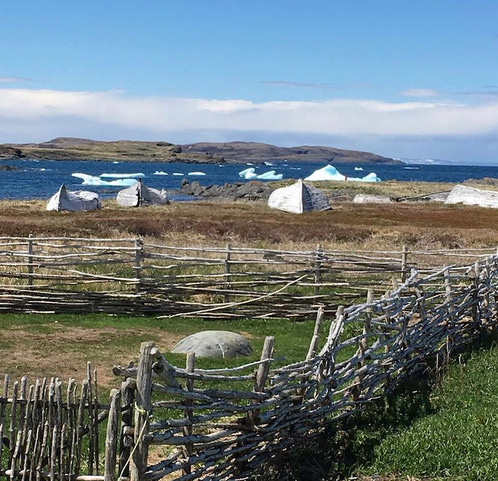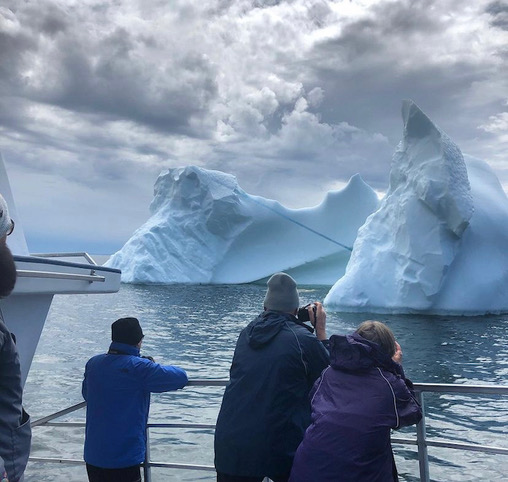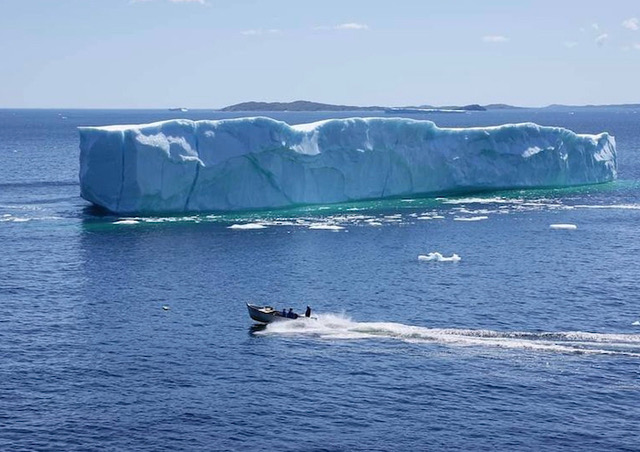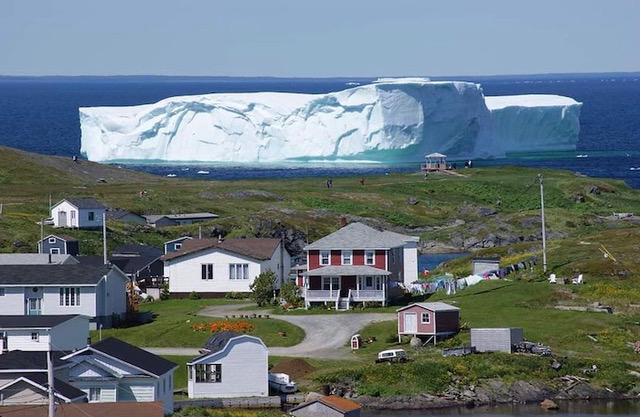June 3 marks the start of Newfoundland and Labrador’s annual Iceberg Festival.
Yes, that’s right! Canada has icebergs, and they are pretty spectacular. There’s no wonder Newfoundlanders celebrate with a ten-day-long festival.
Ninety per cent of the icebergs in Newfoundland come from the glaciers of western Greenland. The rest come from glaciers in Canada’s Arctic area.
What is the Iceberg festival?

These are small icebergs off of Norstead Village, a reconstruction of a viking settlement. (@theicebergfest/Instagram)
The Iceberg Festival celebrates the coming of the icebergs. This moment also represents the start of spring.
That may be hard to believe since icebergs are pretty cold. But every year in late April, they break off glaciers and float along toward the Newfoundland & Labrador coast. Come June, these passing icebergs are in their peak viewing season!
The festival starts with a flag raising ceremony, followed by a tea party where visitors dig into a traditional Newfoundland breakfast! This includes baked beans, fish cakes, and toutons. (Toutons are basically fluffy pancakes fried in pork fat. YUM!)
The rest of the Iceberg Festival is a huge party that celebrates Newfoundland’s culture! It offers plenty of art exhibits at local museums, more traditional food, and fish frys. There are even viking feasts where you can enjoy meals with viking impersonators. How cool is that?
(In case you didn’t know, vikings established the very first European settlement in Newfoundland, so they’re a big part of local culture.)
But of course, the most exciting part of the whole festival are the icebergs themselves.
Where are the icebergs?

Here are some visitors hunting for icebergs off of the coast of St. Anthony, Newfoundland and Labrador. St. Anthony is a prime iceberg viewing spot along the Iceberg Alley. (@theicebergfest/Instagram)
During late spring and summer, these 10,000 year-old icy giants can be seen all along the northern and eastern coasts of the province. They come in many shapes, sizes, and colours (from white to deep aquamarine).
Most icebergs can be seen along an area known as Iceberg Alley. This stretches from the coast of Labrador to the southeast coast of Newfoundland. Approximately 400 to 800 icebergs float along Iceberg Alley every year. During the festival, visitors have the chance to go on boats to see them up close!
How are icebergs formed?

Another really big berg! (@theicebergfest/Instagram)
When the edges of glaciers break off and slip into the ocean, an iceberg is formed.
Glaciers are made up out of snow that has been squished into giant mounds of ice. Most glaciers that exist on Earth today were formed during the Ice Age—that’s more than 10,000 years old!
Icebergs come in many sizes. Some are very large—weighing more than ten million tonnes and stretching hundreds of meters long.
Medium sized icebergs are called 'bergy bits'—they’re about the size of a small house. The smallest are called 'growlers'—they’re the size of a grand piano (which is still pretty big!). The average iceberg in Newfoundland weighs 100,000 to 200,000 tonnes (100,000 tonnes is equal to the weight of 100,000 adult walruses).
Almost 90 per cent of these icy giants are under water. In fact, their width under water can be 30 percent larger than what you can see above water. This can be pretty dangerous for boats. If a ship collides with the bottom of a big iceberg, it can be a big problem.
But as long as you're careful, there sure seems like there’s a lot to love about icebergs! We think seeing them in real life would make them even more special.
Would you like to go to the Iceberg Festival?
 Here’s a big iceberg off the coast of St. Anthony, Newfoundland and Labrador. (@theicebergfest/Instagram)
Here’s a big iceberg off the coast of St. Anthony, Newfoundland and Labrador. (@theicebergfest/Instagram)









